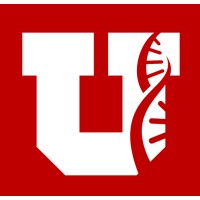
University of Utah Health Company Cyber Security Posture
utah.eduUniversity of Utah Health is the Intermountain West’s only academic health care system, combining excellence in patient care, the latest in medical research, and teaching to provide leading-edge medicine in a caring and personal setting. The system provides care for Utahns and residents of five surrounding states in a referral area encompassing more than 10 percent of the continental United States. Whether it’s for routine care or highly specialized treatment in orthopedics, stroke, ophthalmology, cancer, radiology, fertility, cardiology, genetic-related diseases, organ transplant, or many other areas of medicine, University of Utah Health offers the latest technology and advancements, including some services available nowhere else in the region. As part of that system, University of Utah Health Hospitals and Clinics rely on more than 1,600 board-certified physicians who staff five University hospitals (University Hospital, Huntsman Cancer Hospital, Craig H. Neilsen Rehabilitation Hospital, University Orthopaedic Center, and the University Neuropsychiatric Institute); 12 community clinics; and several specialty centers including the John A. Moran Eye Center, Kathryn F. Kirk Center for Comprehensive Cancer Care and Women's Cancers, the Cardiovascular Center, the Clinical Neurosciences Center, and the Utah Diabetes Center. University of Utah Health is consistently ranked among US News & World Report’s Best Hospitals, has ranked in the nation’s top 10 for quality health care among leading academic medical centers by Vizient Inc., Its academic partners at the University of Utah School of Medicine and Colleges of Nursing, Pharmacy, Dentistry, and Health are internationally regarded research and teaching institutions.
UUH Company Details
university-of-utah-hospital
9090 employees
45336.0
62
Hospitals and Health Care
utah.edu
Scan still pending
UNI_4333371
In-progress
Between 800 and 900
This score is AI-generated and less favored by cyber insurers, who prefer the TPRM score.
 UUH Global Score
UUH Global Score.png)

University of Utah Health Company Scoring based on AI Models
| Model Name | Date | Description | Current Score Difference | Score |
|---|---|---|---|---|
| AVERAGE-Industry | 03-12-2025 | This score represents the average cybersecurity rating of companies already scanned within the same industry. It provides a benchmark to compare an individual company's security posture against its industry peers. | N/A | Between 800 and 900 |
University of Utah Health Company Cyber Security News & History
| Entity | Type | Severity | Impact | Seen | Url ID | Details | View |
|---|---|---|---|---|---|---|---|
| University of Utah Health | Breach | 85 | 4 | 04/2020 | UNI1324123 | Link | |
Rankiteo Explanation : Attack with significant impact with customers data leaksDescription: University of Utah Health Care – Hospitals and Clinics had become prey of a security incident. Some of the University of Utah Health's patient's private information had been compromised in an email security breach. Some of its employees' email accounts were compromised in phishing schemes, resulting in unauthorized access to those accounts between April 6 and May 22. Compromised information included patient names, dates of birth, medical record numbers, and limited clinical information related to the care patients received at U of U Health facilities. | |||||||
| University of Utah Health | Data Leak | 60 | 3 | 01/2020 | UNI210221222 | Link | |
Rankiteo Explanation : Attack with significant impact with internal employee data leaksDescription: The University of Utah Health fell for a phishing attack. From January 22 to February 27, 2020, there was an unauthorized access to some employees’ email accounts. The unauthorized access occurred as a result of phishing schemes sent to the employees’ email accounts. Some patient information was included in the email account, including names, dates of birth, medical record numbers, and limited clinical information about care received at the University of Utah Health. | |||||||
University of Utah Health Company Subsidiaries

University of Utah Health is the Intermountain West’s only academic health care system, combining excellence in patient care, the latest in medical research, and teaching to provide leading-edge medicine in a caring and personal setting. The system provides care for Utahns and residents of five surrounding states in a referral area encompassing more than 10 percent of the continental United States. Whether it’s for routine care or highly specialized treatment in orthopedics, stroke, ophthalmology, cancer, radiology, fertility, cardiology, genetic-related diseases, organ transplant, or many other areas of medicine, University of Utah Health offers the latest technology and advancements, including some services available nowhere else in the region. As part of that system, University of Utah Health Hospitals and Clinics rely on more than 1,600 board-certified physicians who staff five University hospitals (University Hospital, Huntsman Cancer Hospital, Craig H. Neilsen Rehabilitation Hospital, University Orthopaedic Center, and the University Neuropsychiatric Institute); 12 community clinics; and several specialty centers including the John A. Moran Eye Center, Kathryn F. Kirk Center for Comprehensive Cancer Care and Women's Cancers, the Cardiovascular Center, the Clinical Neurosciences Center, and the Utah Diabetes Center. University of Utah Health is consistently ranked among US News & World Report’s Best Hospitals, has ranked in the nation’s top 10 for quality health care among leading academic medical centers by Vizient Inc., Its academic partners at the University of Utah School of Medicine and Colleges of Nursing, Pharmacy, Dentistry, and Health are internationally regarded research and teaching institutions.
Access Data Using Our API

Get company history
.png)
UUH Cyber Security News
Data Privacy Week: Web browser privacy review
The annual event (Jan. 27-31 this year) is an “effort to empower individuals and businesses to respect privacy, safeguard data and enable trust,”
AHA podcast: Quality 101 — How University of Utah Health Strengthens Board Culture for Better Patient Outcomes
A “Quality 101” approach helped bridge knowledge gaps between clinicians and board members and why making this transformation interactive leads to stronger ...
CommonSpirit partners up with U of U for clinical collaboration
The clinical alliance will increase access to medical care closer to home, CommonSpirit Health and U of U Health said Wednesday. To improve ...
CommonSpirit Forms Alliance With University of Utah Health
Patients at the five CommonSpirit hospitals in Utah will have access to the physicians and providers at University of Utah Health.
Sophisticated, multistep phishing attacks use common tactics
All phishing attacks use similar methods to trick people into divulging information, giving away money, opening suspicious links or ...
Utah State Legislature Brief: How USU is Affected by 2025 Legislative Session
The Utah Legislature approved a 2.5% pay increase budget for higher education employees, along with some additional funding for health and ...
Travelers stranded overnight at SLC airport by global tech outage
The outage was caused by an issue with Crowdstrike, a tech company that provides cybersecurity services to organizations worldwide. The company ...
Data breach at University of Utah Health Plans could impact members
A data breach at University of Utah Health Plans was discovered in June that could potentially their members sensitive information.
What is CrowdStrike, the company linked to the global outage?
CrowdStrike told customers early Friday that the outages were caused by “a defect found in a single content update of its software on Microsoft ...

UUH Similar Companies
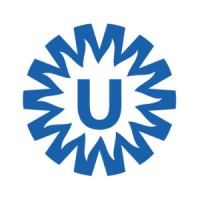
UMC Utrecht
The University Medical Center Utrecht is one of the largest academic healthcare institutions in the Netherlands. We provide the best healthcare for today’s patients, and we also work towards a healthy society in the future. Our organization has three core tasks: care, research and education. Ca
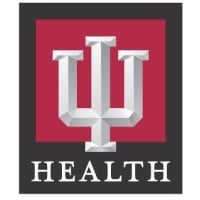
Indiana University Health
Indiana University Health is Indiana’s largest and most comprehensive system. Additionally, IU Health - home to the IU Health Medical Center has been ranked #1 in Indiana for over a decade by U.S. News & World Report. A unique partnership with the Indiana University School of Medicine—one of the na
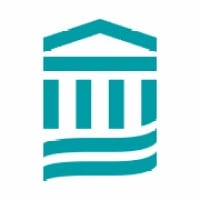
Brigham and Women's Hospital
Boston's Brigham and Women's Hospital (BWH) is an international leader in virtually every area of medicine and has been the site of pioneering breakthroughs that have improved lives around the world. A major teaching hospital of Harvard Medical School, BWH has a legacy of excellence that continues t
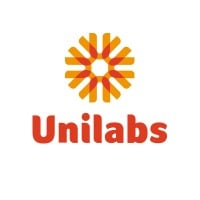
Unilabs
We are one of Europe’s leading suppliers of clinical laboratory testing and medical diagnostic imaging services to private and public healthcare providers, local governments, insurance companies, pharmaceutical companies and the general public. We operate laboratory and medical diagnostic imaging
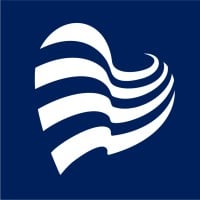
Banner Health
Headquartered in Arizona, Banner Health is one of the largest nonprofit health care systems in the country. The system owns and operates 28 acute-care hospitals, Banner Health Network, Banner – University Medicine, academic and employed physician groups, long-term care centers, outpatient surgery ce
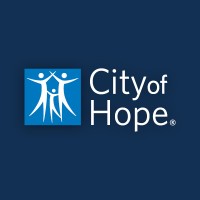
City of Hope
City of Hope's mission is to deliver the cures of tomorrow to the people who need them today. Founded in 1913, City of Hope has grown into one of the largest cancer research and treatment organizations in the U.S. and one of the leading research centers for diabetes and other life-threatening illnes

Frequently Asked Questions (FAQ) on Cybersecurity Incidents
UUH CyberSecurity History Information
Total Incidents: According to Rankiteo, UUH has faced 2 incidents in the past.
Incident Types: The types of cybersecurity incidents that have occurred include ['Breach', 'Data Leak'].
Total Financial Loss: The total financial loss from these incidents is estimated to be {total_financial_loss}.
Cybersecurity Posture: The company's overall cybersecurity posture is described as University of Utah Health is the Intermountain West’s only academic health care system, combining excellence in patient care, the latest in medical research, and teaching to provide leading-edge medicine in a caring and personal setting. The system provides care for Utahns and residents of five surrounding states in a referral area encompassing more than 10 percent of the continental United States. Whether it’s for routine care or highly specialized treatment in orthopedics, stroke, ophthalmology, cancer, radiology, fertility, cardiology, genetic-related diseases, organ transplant, or many other areas of medicine, University of Utah Health offers the latest technology and advancements, including some services available nowhere else in the region. As part of that system, University of Utah Health Hospitals and Clinics rely on more than 1,600 board-certified physicians who staff five University hospitals (University Hospital, Huntsman Cancer Hospital, Craig H. Neilsen Rehabilitation Hospital, University Orthopaedic Center, and the University Neuropsychiatric Institute); 12 community clinics; and several specialty centers including the John A. Moran Eye Center, Kathryn F. Kirk Center for Comprehensive Cancer Care and Women's Cancers, the Cardiovascular Center, the Clinical Neurosciences Center, and the Utah Diabetes Center. University of Utah Health is consistently ranked among US News & World Report’s Best Hospitals, has ranked in the nation’s top 10 for quality health care among leading academic medical centers by Vizient Inc., Its academic partners at the University of Utah School of Medicine and Colleges of Nursing, Pharmacy, Dentistry, and Health are internationally regarded research and teaching institutions..
Detection and Response: The company detects and responds to cybersecurity incidents through {description_of_detection_and_response_process}.
Incident Details
Incident 1: Ransomware Attack
Title: {Incident_Title}
Description: {Brief_description_of_the_incident}
Date Detected: {Detection_Date}
Date Publicly Disclosed: {Disclosure_Date}
Date Resolved: {Resolution_Date}
Type: {Type_of_Attack}
Attack Vector: {Attack_Vector}
Vulnerability Exploited: {Vulnerability}
Threat Actor: {Threat_Actor}
Motivation: {Motivation}
Incident 2: Data Breach
Title: {Incident_Title}
Description: {Brief_description_of_the_incident}
Date Detected: {Detection_Date}
Date Publicly Disclosed: {Disclosure_Date}
Date Resolved: {Resolution_Date}
Type: {Type_of_Attack}
Attack Vector: {Attack_Vector}
Vulnerability Exploited: {Vulnerability}
Threat Actor: {Threat_Actor}
Motivation: {Motivation}
Common Attack Types: As of now, the company has not encountered any reported incidents involving common cyberattacks.
Identification of Attack Vectors: The company identifies the attack vectors used in incidents through {description_of_identification_process}.
Impact of the Incidents
Incident 1: Ransomware Attack
Financial Loss: {Financial_Loss}
Data Compromised: {Data_Compromised}
Systems Affected: {Systems_Affected}
Downtime: {Downtime}
Operational Impact: {Operational_Impact}
Conversion Rate Impact: {Conversion_Rate_Impact}
Revenue Loss: {Revenue_Loss}
Customer Complaints: {Customer_Complaints}
Brand Reputation Impact: {Brand_Reputation_Impact}
Legal Liabilities: {Legal_Liabilities}
Identity Theft Risk: {Identity_Theft_Risk}
Payment Information Risk: {Payment_Information_Risk}
Incident 2: Data Breach
Financial Loss: {Financial_Loss}
Data Compromised: {Data_Compromised}
Systems Affected: {Systems_Affected}
Downtime: {Downtime}
Operational Impact: {Operational_Impact}
Conversion Rate Impact: {Conversion_Rate_Impact}
Revenue Loss: {Revenue_Loss}
Customer Complaints: {Customer_Complaints}
Brand Reputation Impact: {Brand_Reputation_Impact}
Legal Liabilities: {Legal_Liabilities}
Identity Theft Risk: {Identity_Theft_Risk}
Payment Information Risk: {Payment_Information_Risk}
Average Financial Loss: The average financial loss per incident is {average_financial_loss}.
Commonly Compromised Data Types: The types of data most commonly compromised in incidents are {list_of_commonly_compromised_data_types}.
Incident 1: Ransomware Attack
Entity Name: {Entity_Name}
Entity Type: {Entity_Type}
Industry: {Industry}
Location: {Location}
Size: {Size}
Customers Affected: {Customers_Affected}
Incident 2: Data Breach
Entity Name: {Entity_Name}
Entity Type: {Entity_Type}
Industry: {Industry}
Location: {Location}
Size: {Size}
Customers Affected: {Customers_Affected}
Response to the Incidents
Incident 1: Ransomware Attack
Incident Response Plan Activated: {Yes/No}
Third Party Assistance: {Yes/No}
Law Enforcement Notified: {Yes/No}
Containment Measures: {Containment_Measures}
Remediation Measures: {Remediation_Measures}
Recovery Measures: {Recovery_Measures}
Communication Strategy: {Communication_Strategy}
Adaptive Behavioral WAF: {Adaptive_Behavioral_WAF}
On-Demand Scrubbing Services: {On_Demand_Scrubbing_Services}
Network Segmentation: {Network_Segmentation}
Enhanced Monitoring: {Enhanced_Monitoring}
Incident 2: Data Breach
Incident Response Plan Activated: {Yes/No}
Third Party Assistance: {Yes/No}
Law Enforcement Notified: {Yes/No}
Containment Measures: {Containment_Measures}
Remediation Measures: {Remediation_Measures}
Recovery Measures: {Recovery_Measures}
Communication Strategy: {Communication_Strategy}
Adaptive Behavioral WAF: {Adaptive_Behavioral_WAF}
On-Demand Scrubbing Services: {On_Demand_Scrubbing_Services}
Network Segmentation: {Network_Segmentation}
Enhanced Monitoring: {Enhanced_Monitoring}
Incident Response Plan: The company's incident response plan is described as {description_of_incident_response_plan}.
Third-Party Assistance: The company involves third-party assistance in incident response through {description_of_third_party_involvement}.
Data Breach Information
Incident 2: Data Breach
Type of Data Compromised: {Type_of_Data}
Number of Records Exposed: {Number_of_Records}
Sensitivity of Data: {Sensitivity_of_Data}
Data Exfiltration: {Yes/No}
Data Encryption: {Yes/No}
File Types Exposed: {File_Types}
Personally Identifiable Information: {Yes/No}
Prevention of Data Exfiltration: The company takes the following measures to prevent data exfiltration: {description_of_prevention_measures}.
Handling of PII Incidents: The company handles incidents involving personally identifiable information (PII) through {description_of_handling_process}.
Ransomware Information
Incident 1: Ransomware Attack
Ransom Demanded: {Ransom_Amount}
Ransom Paid: {Ransom_Paid}
Ransomware Strain: {Ransomware_Strain}
Data Encryption: {Yes/No}
Data Exfiltration: {Yes/No}
Ransom Payment Policy: The company's policy on paying ransoms in ransomware incidents is described as {description_of_ransom_payment_policy}.
Data Recovery from Ransomware: The company recovers data encrypted by ransomware through {description_of_data_recovery_process}.
Regulatory Compliance
Incident 1: Ransomware Attack
Regulations Violated: {Regulations_Violated}
Fines Imposed: {Fines_Imposed}
Legal Actions: {Legal_Actions}
Regulatory Notifications: {Regulatory_Notifications}
Incident 2: Data Breach
Regulations Violated: {Regulations_Violated}
Fines Imposed: {Fines_Imposed}
Legal Actions: {Legal_Actions}
Regulatory Notifications: {Regulatory_Notifications}
Regulatory Frameworks: The company complies with the following regulatory frameworks regarding cybersecurity: {list_of_regulatory_frameworks}.
Ensuring Regulatory Compliance: The company ensures compliance with regulatory requirements through {description_of_compliance_measures}.
Lessons Learned and Recommendations
Incident 1: Ransomware Attack
Lessons Learned: {Lessons_Learned}
Incident 2: Data Breach
Lessons Learned: {Lessons_Learned}
Incident 1: Ransomware Attack
Recommendations: {Recommendations}
Incident 2: Data Breach
Recommendations: {Recommendations}
Key Lessons Learned: The key lessons learned from past incidents are {list_of_key_lessons_learned}.
Implemented Recommendations: The company has implemented the following recommendations to improve cybersecurity: {list_of_implemented_recommendations}.
References
Additional Resources: Stakeholders can find additional resources on cybersecurity best practices at {list_of_additional_resources}.
Investigation Status
Incident 1: Ransomware Attack
Investigation Status: {Investigation_Status}
Incident 2: Data Breach
Investigation Status: {Investigation_Status}
Communication of Investigation Status: The company communicates the status of incident investigations to stakeholders through {description_of_communication_process}.
Stakeholder and Customer Advisories
Incident 1: Ransomware Attack
Stakeholder Advisories: {Stakeholder_Advisories}
Customer Advisories: {Customer_Advisories}
Incident 2: Data Breach
Stakeholder Advisories: {Stakeholder_Advisories}
Customer Advisories: {Customer_Advisories}
Advisories Provided: The company provides the following advisories to stakeholders and customers following an incident: {description_of_advisories_provided}.
Initial Access Broker
Incident 1: Ransomware Attack
Entry Point: {Entry_Point}
Reconnaissance Period: {Reconnaissance_Period}
Backdoors Established: {Backdoors_Established}
High Value Targets: {High_Value_Targets}
Data Sold on Dark Web: {Yes/No}
Incident 2: Data Breach
Entry Point: {Entry_Point}
Reconnaissance Period: {Reconnaissance_Period}
Backdoors Established: {Backdoors_Established}
High Value Targets: {High_Value_Targets}
Data Sold on Dark Web: {Yes/No}
Monitoring and Mitigation of Initial Access Brokers: The company monitors and mitigates the activities of initial access brokers through {description_of_monitoring_and_mitigation_measures}.
Post-Incident Analysis
Incident 1: Ransomware Attack
Root Causes: {Root_Causes}
Corrective Actions: {Corrective_Actions}
Incident 2: Data Breach
Root Causes: {Root_Causes}
Corrective Actions: {Corrective_Actions}
Post-Incident Analysis Process: The company's process for conducting post-incident analysis is described as {description_of_post_incident_analysis_process}.
Corrective Actions Taken: The company has taken the following corrective actions based on post-incident analysis: {list_of_corrective_actions_taken}.
Additional Questions
General Information
Ransom Payment History: The company has {paid/not_paid} ransoms in the past.
Last Ransom Demanded: The amount of the last ransom demanded was {last_ransom_amount}.
Last Attacking Group: The attacking group in the last incident was {last_attacking_group}.
Incident Details
Most Recent Incident Detected: The most recent incident detected was on {most_recent_incident_detected_date}.
Most Recent Incident Publicly Disclosed: The most recent incident publicly disclosed was on {most_recent_incident_publicly_disclosed_date}.
Most Recent Incident Resolved: The most recent incident resolved was on {most_recent_incident_resolved_date}.
Impact of the Incidents
Highest Financial Loss: The highest financial loss from an incident was {highest_financial_loss}.
Most Significant Data Compromised: The most significant data compromised in an incident was {most_significant_data_compromised}.
Most Significant System Affected: The most significant system affected in an incident was {most_significant_system_affected}.
Response to the Incidents
Third-Party Assistance in Most Recent Incident: The third-party assistance involved in the most recent incident was {third_party_assistance_in_most_recent_incident}.
Containment Measures in Most Recent Incident: The containment measures taken in the most recent incident were {containment_measures_in_most_recent_incident}.
Data Breach Information
Most Sensitive Data Compromised: The most sensitive data compromised in a breach was {most_sensitive_data_compromised}.
Number of Records Exposed: The number of records exposed in the most significant breach was {number_of_records_exposed}.
Ransomware Information
Highest Ransom Demanded: The highest ransom demanded in a ransomware incident was {highest_ransom_demanded}.
Highest Ransom Paid: The highest ransom paid in a ransomware incident was {highest_ransom_paid}.
Regulatory Compliance
Highest Fine Imposed: The highest fine imposed for a regulatory violation was {highest_fine_imposed}.
Most Significant Legal Action: The most significant legal action taken for a regulatory violation was {most_significant_legal_action}.
Lessons Learned and Recommendations
Most Significant Lesson Learned: The most significant lesson learned from past incidents was {most_significant_lesson_learned}.
Most Significant Recommendation Implemented: The most significant recommendation implemented to improve cybersecurity was {most_significant_recommendation_implemented}.
References
Most Recent Source: The most recent source of information about an incident is {most_recent_source}.
Most Recent URL for Additional Resources: The most recent URL for additional resources on cybersecurity best practices is {most_recent_url}.
Investigation Status
Current Status of Most Recent Investigation: The current status of the most recent investigation is {current_status_of_most_recent_investigation}.
Stakeholder and Customer Advisories
Most Recent Stakeholder Advisory: The most recent stakeholder advisory issued was {most_recent_stakeholder_advisory}.
Most Recent Customer Advisory: The most recent customer advisory issued was {most_recent_customer_advisory}.
Initial Access Broker
Most Recent Entry Point: The most recent entry point used by an initial access broker was {most_recent_entry_point}.
Most Recent Reconnaissance Period: The most recent reconnaissance period for an incident was {most_recent_reconnaissance_period}.
Post-Incident Analysis
Most Significant Root Cause: The most significant root cause identified in post-incident analysis was {most_significant_root_cause}.
Most Significant Corrective Action: The most significant corrective action taken based on post-incident analysis was {most_significant_corrective_action}.
What Do We Measure?
















Every week, Rankiteo analyzes billions of signals to give organizations a sharper, faster view of emerging risks. With deeper, more actionable intelligence at their fingertips, security teams can outpace threat actors, respond instantly to Zero-Day attacks, and dramatically shrink their risk exposure window.
These are some of the factors we use to calculate the overall score:
Identify exposed access points, detect misconfigured SSL certificates, and uncover vulnerabilities across the network infrastructure.
Gain visibility into the software components used within an organization to detect vulnerabilities, manage risk, and ensure supply chain security.
Monitor and manage all IT assets and their configurations to ensure accurate, real-time visibility across the company's technology environment.
Leverage real-time insights on active threats, malware campaigns, and emerging vulnerabilities to proactively defend against evolving cyberattacks.




